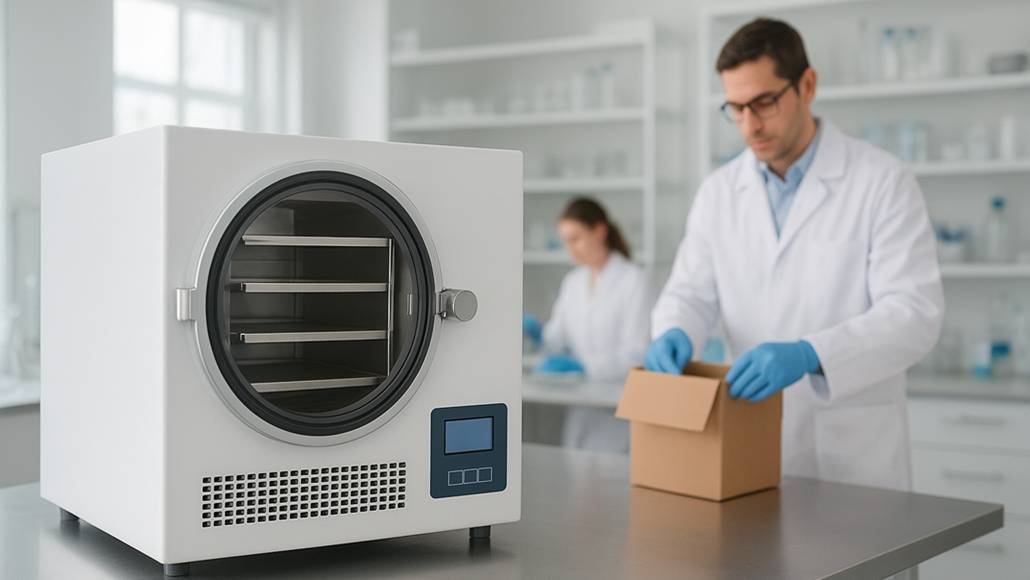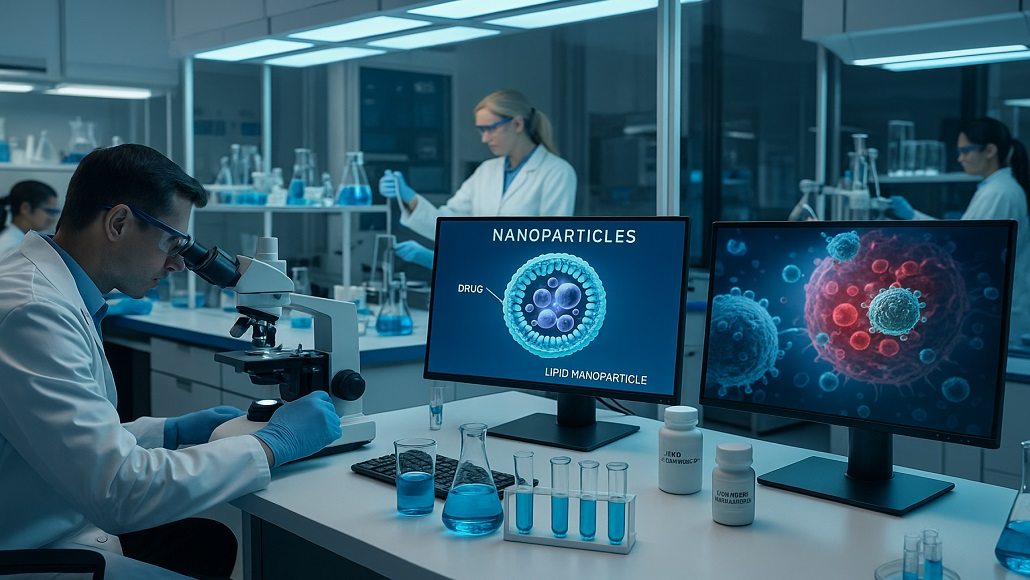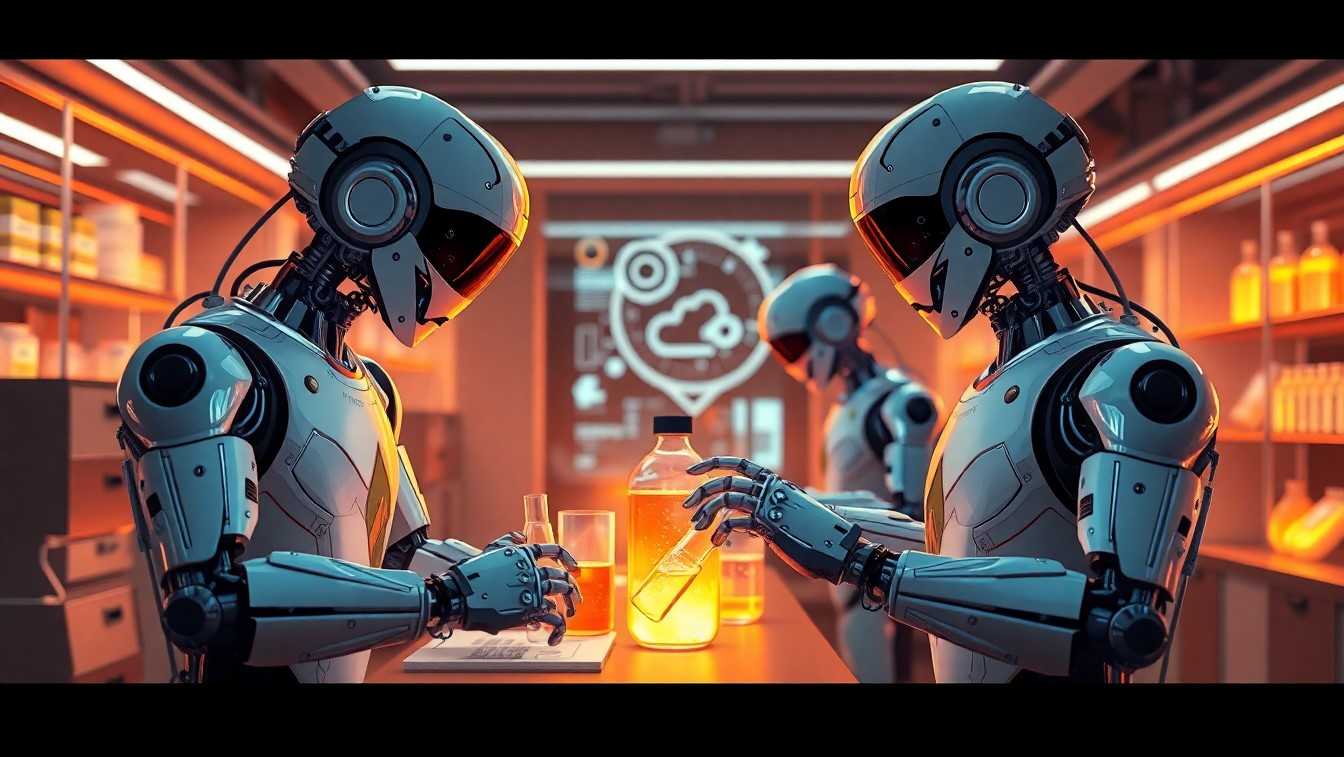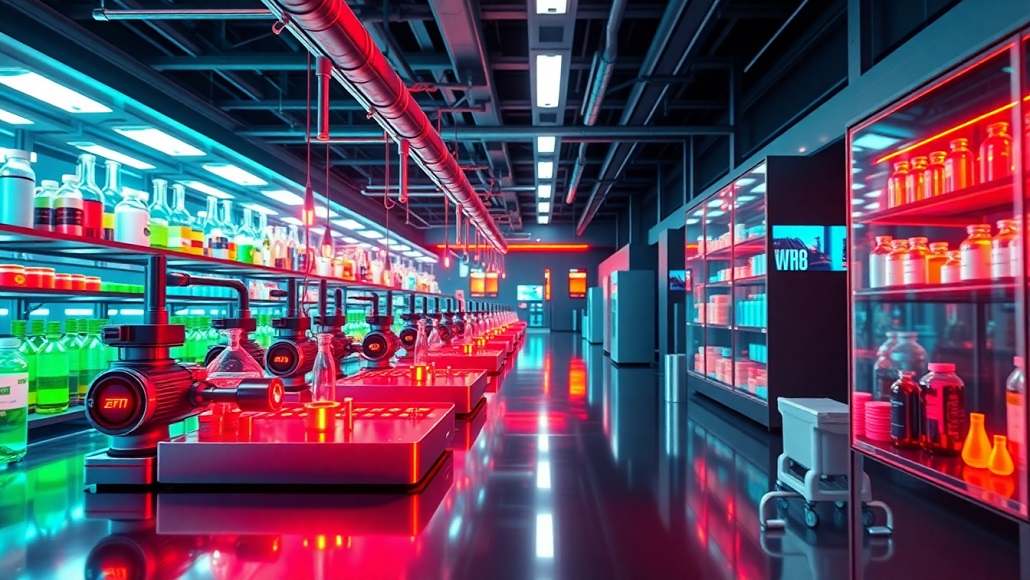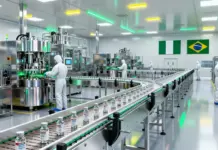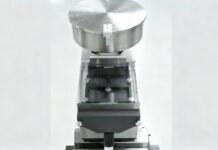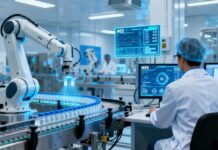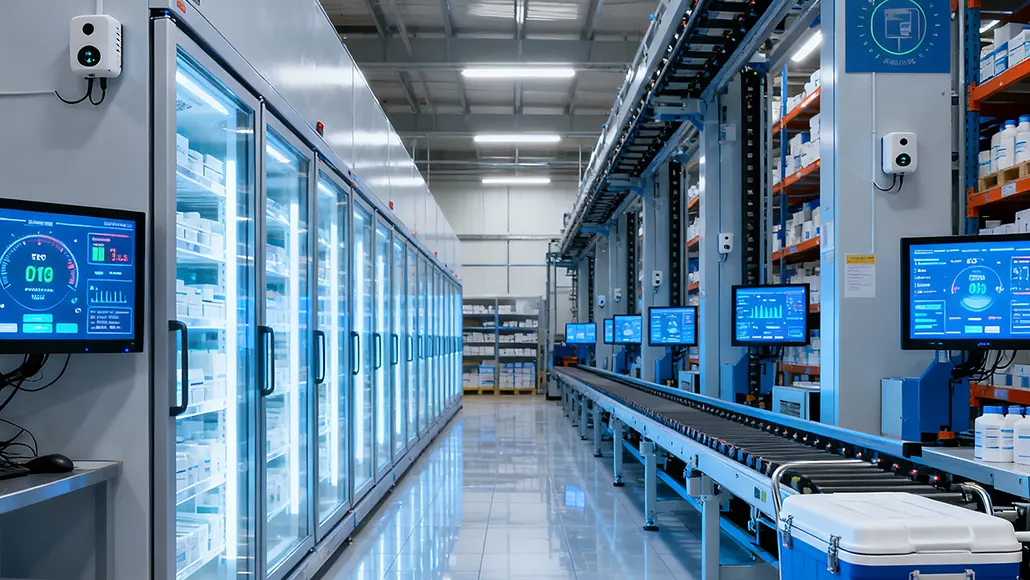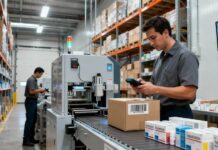Green Bioprocessing: Towards a Carbon-Neutral Pharmaceutical Industry
The pharmaceutical industry stands at a critical crossroads where innovation meets environmental responsibility. As global awareness of climate change intensifies and regulatory pressures mount, the sector faces an unprecedented imperative to transform its manufacturing operations toward carbon neutrality. Green bioprocessing emerges as the cornerstone technology enabling this transformation, offering pharmaceutical manufacturers a pathway to sustainable production without compromising quality, safety, or therapeutic efficacy.
The urgency of this transition cannot be overstated. Recent analysis reveals that the biotech and pharmaceutical sector generated 397 million tonnes of CO₂-equivalent emissions in 2023, with Scope 3 emissions from supply chains accounting for 5.4 times more than direct operational emissions. This environmental footprint positions the industry as a significant contributor to global greenhouse gas emissions, surpassing sectors like forestry and semiconductors. However, the same data reveals promising momentum, with 31 percent of pharmaceutical companies now setting medium-term targets aligned with the ambitious 1.5°C pathway outlined in the Paris Climate Agreement, a dramatic increase from just 10 companies the previous year.
Understanding Green Bioprocessing in Pharmaceutical Manufacturing
Green bioprocessing represents a fundamental reimagining of how biological systems produce therapeutic molecules. Unlike traditional chemical synthesis methods that rely heavily on fossil fuel-derived energy, toxic solvents, and generate substantial hazardous waste, green bioprocessing harnesses biological organisms like bacteria, yeast, and mammalian cells to manufacture complex pharmaceuticals in environmentally benign conditions. This approach leverages the precision and efficiency of nature’s own molecular machinery, conducting reactions in aqueous environments at moderate temperatures and pressures.
The transformation extends beyond simply replacing chemical reactions with biological ones. Sustainable bioprocessing encompasses the entire manufacturing ecosystem, from raw material selection through energy consumption, water utilization, waste generation, and end-of-life considerations. Companies implementing green bioprocessing strategies are redesigning fermentation processes to maximize product yields while minimizing resource inputs, adopting renewable feedstocks derived from agricultural waste streams, and implementing circular economy principles where waste from one process becomes input for another.
Process intensification represents a key enabling strategy within green bioprocessing. By optimizing cell culture conditions, nutrient delivery systems, and downstream purification processes, pharmaceutical manufacturers achieve higher product concentrations from smaller batch sizes. This intensification reduces the physical footprint of production facilities, decreases water and energy consumption per unit of product, and enables more agile manufacturing capabilities that can respond to changing market demands without excessive resource waste.
The integration of single-use bioprocessing technologies illustrates how green bioprocessing balances environmental considerations with practical operational needs. While disposable bioreactors and tubing initially raised concerns about plastic waste, careful lifecycle analysis reveals that their elimination of cleaning validation, reduction in water-for-injection requirements, and decreased energy consumption for steam sterilization can yield net environmental benefits. Leading manufacturers now source single-use components made from biodegradable or recyclable materials, implementing take-back programs that divert these materials from landfills while recovering valuable polymers for recycling into new products.
Energy Efficiency and Carbon Reduction Strategies
Energy consumption represents the most significant opportunity for carbon reduction in pharmaceutical manufacturing. Traditional bioprocessing facilities maintain cleanroom environments with multiple air changes per hour, operate continuous refrigeration systems for temperature-sensitive products, and power energy-intensive centrifuges and chromatography systems around the clock. Combined heat and power systems have emerged as transformative solutions, enabling pharmaceutical manufacturers to generate electricity and capture waste heat simultaneously with overall efficiency approaching 80 percent compared to 35 percent for conventional power generation.
One international pharmaceutical manufacturer implemented a 4.5 megawatt combined heat and power system specifically designed to support their carbon neutrality goals. This installation reduced overall energy consumption while decreasing operating costs through more efficient fuel utilization. The system captures waste heat from electricity generation and redirects it to processes requiring thermal energy, such as fermentation temperature control and water-for-injection generation. This integrated approach enabled the facility to reduce its carbon footprint significantly while maintaining the stringent environmental controls required for pharmaceutical production.
Renewable energy integration has accelerated dramatically across the pharmaceutical sector. Johnson & Johnson and Novartis have committed to achieving 100 percent renewable energy across their global operations, installing on-site solar arrays, contracting for wind power through power purchase agreements, and investing in green hydrogen solutions. These renewable installations provide stable, predictable energy costs while insulating operations from fossil fuel price volatility. The transition requires careful system design to ensure uninterrupted power supply for critical manufacturing processes, with many facilities combining renewable sources with battery storage systems and grid connections to maintain reliability.
Advanced HVAC systems equipped with smart sensors and IoT-based monitoring represent another frontier in energy optimization. These intelligent systems continuously adjust air flow rates, temperature setpoints, and humidity levels based on real-time occupancy and production schedules rather than maintaining static conditions. During non-production periods, these systems automatically reduce energy consumption while maintaining the validated state of cleanrooms. Some pharmaceutical facilities have achieved 40 percent reductions in HVAC-related energy use through these optimization strategies, contributing significantly to overall carbon reduction goals.
Green Chemistry Principles in Drug Manufacturing
Green chemistry principles provide the intellectual framework guiding pharmaceutical innovation toward sustainability. The twelve principles of green chemistry emphasize preventing waste rather than treating it after generation, designing safer chemicals that degrade after use, using renewable feedstocks, and minimizing derivative steps that require additional reagents. Pharmaceutical companies embracing these principles are fundamentally rethinking medicinal chemistry approaches to drug development, considering environmental impact alongside traditional metrics of potency, selectivity, and bioavailability.
The manufacturing process for Lipitor, one of history’s best-selling pharmaceuticals, exemplifies the transformative potential of green chemistry. Originally synthesized through a multi-step chemical route requiring significant solvent use and generating substantial waste, the process was redesigned to incorporate biocatalytic steps. Engineered enzymes now perform key transformations with high selectivity in aqueous media, eliminating multiple chemical reaction steps, reducing solvent consumption by thousands of tonnes annually, and improving overall process efficiency. This single innovation demonstrates how green chemistry can align environmental sustainability with economic performance.
AstraZeneca’s exploration of photochemistry represents another breakthrough in sustainable synthesis. The company developed “light chemistry” processes that use photons as an energy source to form carbon-nitrogen bonds during pharmaceutical synthesis. This photocatalytic approach occurs at room temperature without requiring high-energy reagents, potentially saving 500 tonnes of CO₂ annually for a single drug compound compared to conventional synthetic routes. The technology exemplifies how pharmaceutical innovation can draw inspiration from natural photosynthesis to create sustainable manufacturing processes.
Solvent recovery and recycling systems have become standard features in green pharmaceutical manufacturing facilities. Traditional drug synthesis consumes vast quantities of organic solvents for reactions, extractions, and purifications, with most historically disposed as hazardous waste. Modern facilities employ advanced distillation systems that recover and purify used solvents to pharmaceutical-grade quality for reuse. Some companies have implemented solvent-free or water-based synthetic routes entirely, eliminating this waste stream while reducing the hazards associated with flammable organic solvents. These innovations demonstrate that environmental sustainability and operational safety advance in tandem.
Sustainable Bioprocessing Materials and Technologies
The materials used throughout bioprocessing operations significantly influence environmental performance. Sustainable bioprocessing materials encompass everything from biodegradable polymers for single-use systems to bio-based growth media components derived from agricultural waste streams. The market for these materials is experiencing explosive growth, projected to expand from current levels to meet the pharmaceutical industry’s increasing demand for eco-friendly alternatives that maintain rigorous quality standards.
Bio-based resins for chromatography represent a significant innovation in downstream processing. Traditional chromatography resins derive from petroleum-based polymers, requiring energy-intensive synthesis and generating carbon emissions throughout their lifecycle. New bio-based alternatives utilize polymers derived from renewable sources like corn starch or sugarcane, offering equivalent or superior performance characteristics while dramatically reducing carbon footprint. These resins maintain the chemical stability, binding capacity, and regulatory acceptance required for pharmaceutical purification while aligning with sustainability goals.
Water consumption in bioprocessing facilities has emerged as a critical sustainability concern, particularly in regions experiencing water stress. Pharmaceutical manufacturing requires enormous quantities of high-purity water for cleaning, formulation, and as a process medium. Advanced water recycling systems now enable facilities to treat and reuse water multiple times within the same facility, with some installations achieving 90 percent water recycling rates. These closed-loop systems combine membrane filtration, ultraviolet disinfection, and multi-effect distillation to produce pharmaceutical-grade water from previously used sources, dramatically reducing environmental impact while enhancing operational resilience.
Bioreactor design evolution reflects the integration of sustainability principles with advanced engineering. Modern bioreactors incorporate real-time monitoring systems that optimize oxygen transfer efficiency, minimize foam formation requiring antifoam agents, and enable precise pH control that reduces acid-base consumption. Some next-generation designs eliminate mechanical agitation entirely, using pneumatic systems or wave-induced motion to mix cultures while consuming significantly less energy. These engineering advances demonstrate how incremental improvements across multiple parameters can yield substantial cumulative environmental benefits.
Regulatory Compliance and Industry Standards
Regulatory frameworks increasingly recognize and incentivize sustainable manufacturing practices in the pharmaceutical sector. The European Union’s pharmaceutical legislation reforms explicitly incorporate environmental considerations, requiring companies to assess and report the environmental impact of manufacturing processes and actively minimize their ecological footprint. This regulatory evolution reflects growing recognition that pharmaceutical quality and patient safety are compatible with and enhanced by sustainable manufacturing practices.
Good Manufacturing Practice guidelines are evolving to accommodate and encourage green bioprocessing technologies. Regulatory agencies recognize that sustainable processes often yield higher product quality through improved control, reduced contamination risks, and enhanced process understanding. The FDA’s recent guidance documents acknowledge continuous manufacturing, single-use technologies, and advanced process control systems as acceptable and often preferred approaches. This regulatory flexibility enables pharmaceutical companies to innovate toward sustainability without encountering resistance from conservative regulatory interpretations.
Sustainability reporting has become a standard expectation for pharmaceutical companies, with investors, customers, and regulatory bodies demanding transparent disclosure of environmental performance. Companies now publish detailed carbon footprint analyses, track progress toward science-based emissions reduction targets, and participate in industry-wide initiatives like My Green Lab’s certification programs. These reporting frameworks create accountability while enabling benchmarking and identification of best practices that can be shared across the industry.
The Race to Zero campaign has attracted significant pharmaceutical industry participation, with companies representing over 56 percent of sector revenue committing to ambitious carbon reduction targets. These commitments require not merely incremental improvements but transformative changes in how pharmaceutical companies source energy, design processes, and engage with suppliers. The campaign’s rigorous criteria ensure that commitments translate into meaningful action, with regular progress assessments and requirements for near-term milestones alongside long-term net-zero goals.
Economic Benefits of Green Bioprocessing
The business case for green bioprocessing extends far beyond regulatory compliance and corporate social responsibility. Companies implementing sustainable bioprocessing strategies consistently report substantial economic benefits that enhance competitiveness while advancing environmental goals. These benefits manifest across multiple dimensions, from reduced operating costs through lower energy and material consumption to enhanced market positioning with environmentally conscious customers and investors.
Amgen’s optimization of sotorasib manufacturing provides compelling evidence of green chemistry’s economic value. The company redesigned the synthetic route to eliminate an unnecessary step that generated copious solvent waste, simultaneously improving yields, reducing manufacturing time, and saving more than three million dollars in annual operating costs. This single process improvement illustrates how environmental sustainability and economic efficiency are not competing objectives but rather complementary aspects of manufacturing excellence.
Waste reduction initiatives consistently generate positive financial returns while advancing environmental goals. One pharmaceutical manufacturer identified a recycling process for a high-value waste stream that was projected to eliminate up to 14,400 tonnes of waste annually. This initiative not only diverted material from expensive disposal pathways but also recovered valuable compounds that could be reused in production processes. Such circular economy approaches transform waste from a cost center into a value-generating opportunity while dramatically reducing environmental impact.
Access to capital increasingly favors companies with robust sustainability credentials. Green bonds, sustainability-linked loans, and environmental, social, and governance-focused investment funds direct enormous capital flows toward companies demonstrating genuine commitment to environmental performance. Pharmaceutical companies with strong sustainability programs often secure more favorable financing terms, reflecting reduced risk profiles and alignment with investor priorities. This financial advantage reinforces the business case for green bioprocessing while accelerating industry-wide transformation.
Future Directions and Emerging Technologies
The trajectory of green bioprocessing points toward increasingly sophisticated integration of biological systems with advanced engineering and digital technologies. Synthetic biology approaches enable researchers to redesign metabolic pathways for enhanced efficiency, programming microorganisms to produce pharmaceutical intermediates from renewable feedstocks with minimal waste generation. These engineered biological systems represent the ultimate expression of green chemistry principles, conducting complex transformations with the selectivity and mild conditions that only biological catalysts can achieve.
Artificial intelligence and machine learning are revolutionizing bioprocess optimization for sustainability. AI algorithms analyze vast datasets from fermentation runs, identifying subtle patterns and correlations that human analysts might miss. These insights enable continuous process improvement, steadily enhancing yields while reducing resource inputs. Some pharmaceutical companies employ AI systems that autonomously adjust process parameters in real-time, maintaining optimal performance despite variations in raw materials or environmental conditions. This intelligent automation enhances both productivity and sustainability simultaneously.
Cell-free protein synthesis represents an emerging technology that could transform pharmaceutical manufacturing. By extracting and purifying the cellular machinery responsible for protein synthesis, researchers can produce therapeutic proteins without maintaining living cells. This approach dramatically reduces the complexity and resource requirements of traditional fermentation, operating in simple test tubes rather than elaborate bioreactors. While still in early developmental stages for pharmaceutical applications, cell-free synthesis demonstrates the innovative thinking driving the next generation of sustainable bioprocessing technologies.
The convergence of bioprocessing with renewable energy technologies promises to create truly carbon-negative pharmaceutical manufacturing. Facilities powered entirely by renewable electricity, using feedstocks derived from carbon dioxide captured from the atmosphere, and implementing biological production processes could actually remove more carbon from the atmosphere than they emit. While this vision remains aspirational, pilot projects are demonstrating technical feasibility, suggesting that future pharmaceutical manufacturing could actively contribute to climate change mitigation rather than merely minimizing its environmental impact.
The pharmaceutical industry’s journey toward carbon neutrality through green bioprocessing represents one of the most significant transformations in the sector’s history. Success requires sustained commitment from pharmaceutical leadership, continued innovation from scientists and engineers, supportive policies from regulatory bodies, and collaboration across the entire supply chain. The environmental imperative is clear, the technologies are rapidly maturing, and the economic benefits are increasingly evident. As the industry continues this transition, green bioprocessing will evolve from a competitive advantage to an operational necessity, defining the future of pharmaceutical manufacturing for decades to come.



